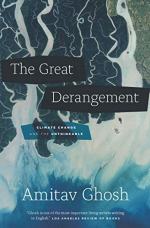|
This section contains 1,683 words (approx. 5 pages at 400 words per page) |

|
Summary
In Part I (“Stories”), Section 1, Amitav Ghosh introduces the idea of a seemingly inert object suddenly revealing itself to be alive, such as a vine that is actually a snake or a piece of driftwood that “turns out to be a crocodile” (3). Humankind's relationship to the earth is similar, he suggests. What was previously believed to be inanimate is now revealing itself to be very much a living thing.
In Section 2, Ghosh explains that his ancestors were “ecological refugees” (3) because they fled present-day Bangladesh in the 1850s when the Padma River suddenly changed course and flooded their village. He defines the word “recognition” (4), and states that this is what his forebears must have felt—a sudden recognition of something they had known deep within themselves all along: that the Earth was alive and unpredictable. He explains that he has been made...
(read more from the Part I, Sections 1 - 8 Summary)
|
This section contains 1,683 words (approx. 5 pages at 400 words per page) |

|




